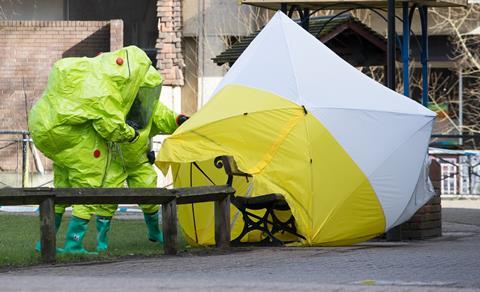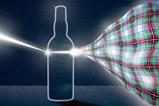Identification of possibly the world’s most dangerous nerve agent was made possible by scientist whistle-blowers from Russia

The fall-out since Sergei Skripal and his daughter Yulia were poisoned on March 4th has been both relieving and disturbing. Relieving because it now seems that the Skripals are going to live. Disturbing because we still can’t be sure what happened and why.
When the Skripals were hospitalised, it was soon clear they had been exposed to a nerve agent. Many nerve agents work by blocking an enzyme that breaks down the chemical messenger acetylcholine. When a muscle nerve senses acetylcholine, it starts contracting the muscle. So if acetylcholine is not broken down, the nerves get flooded with the stuff and this forces the muscles of victims to constantly contract, leading to severe breathing difficulties and heart failure. Luckily, the Skripals were discovered before it got that far.
Finding the identity of the nerve agent was an important clue towards solving the crime. Due to Sergei Skripal’s background as a Russian intelligence officer turned British spy, suspicions against Russia immediately arose. Just over a week after the poisoning, the nerve agent was found to be novichok. It was likely identified by isolating the blocked enzyme from the Skripals’ blood and looking at the chemical structure of the molecule that had bound it, in combination with analysis of environmental samples. It could be identified as novichok because Russian scientists leaked Russian state secrets, firstly about its existence and later about some of its chemical structures.
Novichok is the name of a range of nerve agents developed first by the Soviet Union and later by Russia between the 1970s and 1990s. The Soviet Union initially set out to create a new, more dangerous agent that was undetectable, difficult to treat, and hard to escape even in protective gear. The novichok agents are based on a similar organophosphorus core to more famous nerve gasses like VX and sarin. Novichok is believed to work by covalently binding to a serine group in the active site of the acetylcholine-blocking enzyme. On top of that, novichok contains a protonated amine, which is likely to make it both harder to treat and induce more symptoms, as it can bind to other enzymes.
Novichok’s inventors also needed it to be safer to handle; one of the scientists involved with the development was accidentally exposed and later died. The result was so-called ‘binary’ novichok, made by mixing two non-toxic substances just prior to use. The inventors called it the most deadly nerve agent ever made.
However, confidence that the Skripals were attacked with novichok is not enough to say Russia is definitely behind it. Though a very dangerous undertaking, specialists in creating synthetic routes based only on a chemical structure, and some high-security state labs in the West, are believed to have made it for identification purposes. New Scientist revealed a protocol for making some verisons of novichok was actually published in 2016 by Iranian scientists.
That said, belief in Russia’s involvement is not unfounded. Very pure novichok was used, meaning that it was skilfully produced – Russia has had that capability for years. A new report from UK intelligence services also claims that Russia tested novichok on door handles before the attack, and the highest concentration of novichok was found on Sergei Skripal’s front door. Ultimately, the only thing that could confirm suspicion against Russia is a comparison between the novichok sample recovered from the Skripals and a sample from a Russian production facility.
Regardless, the whole case shows how dangerous nerve agents are and how much difference conscientious scientists can make. If the world had never been alerted to novichok’s existence, there would be far more guesswork now than there already is.














No comments yet